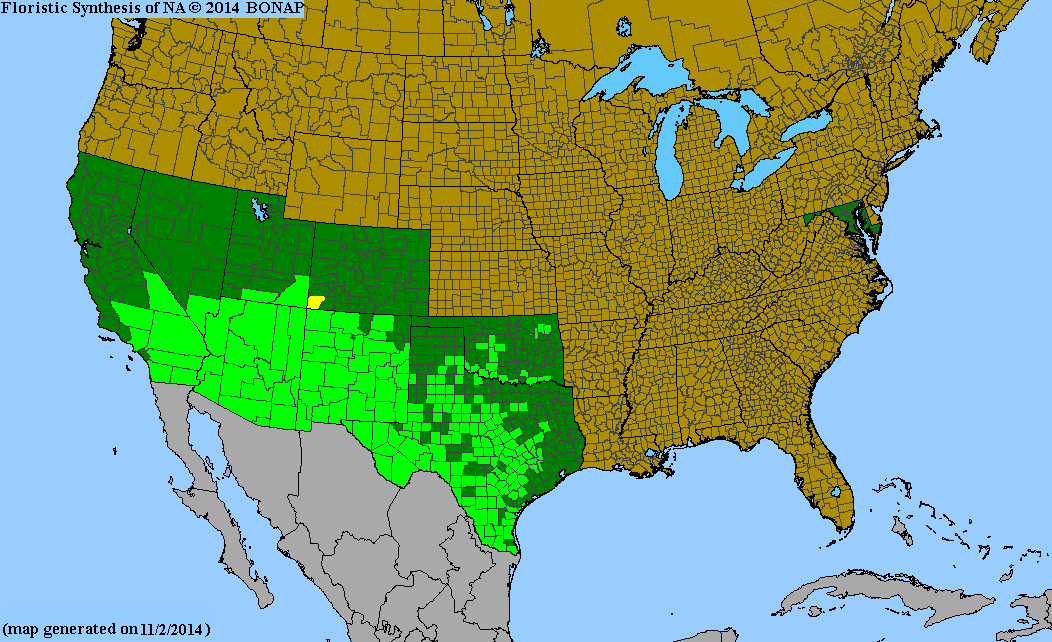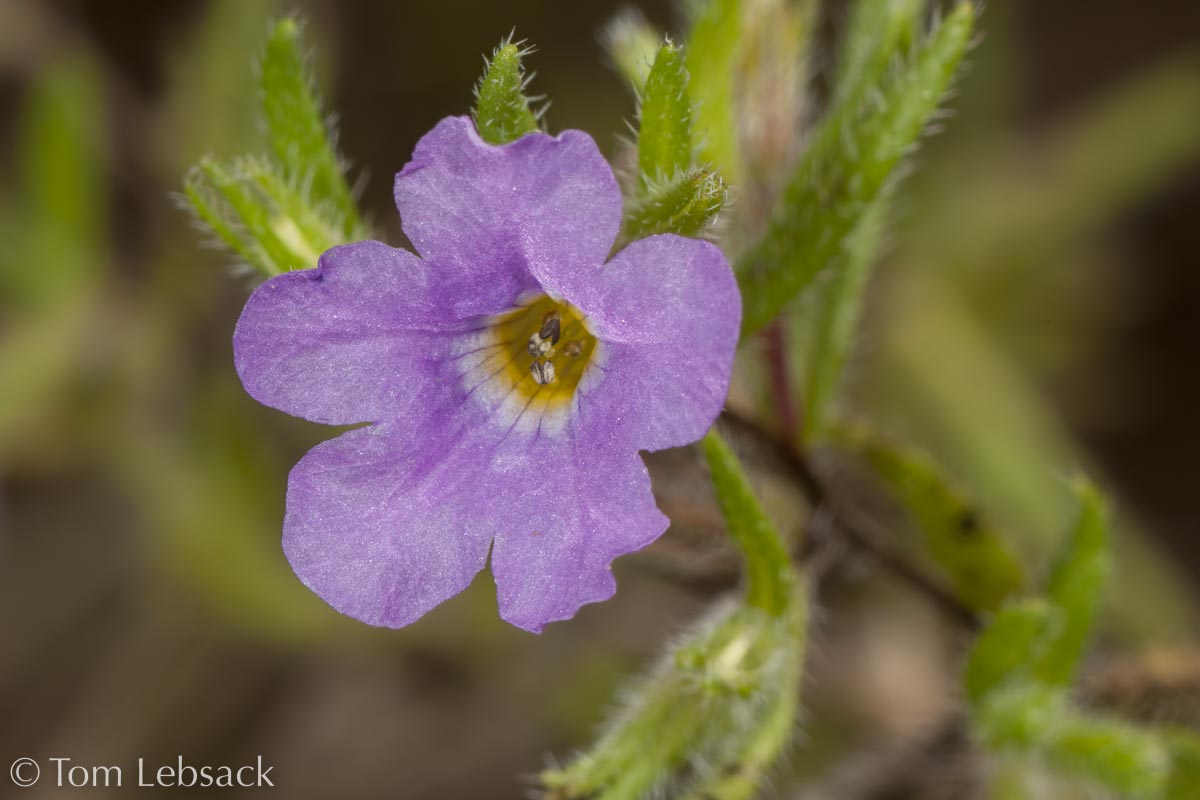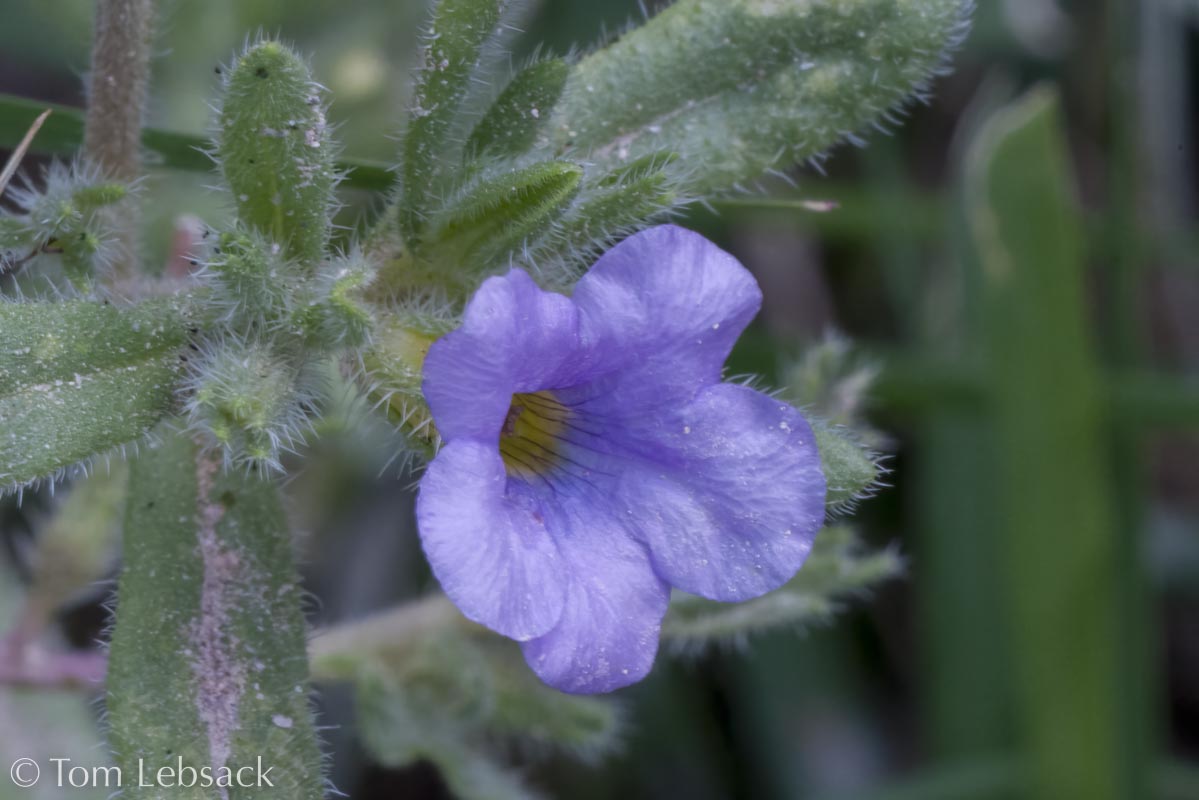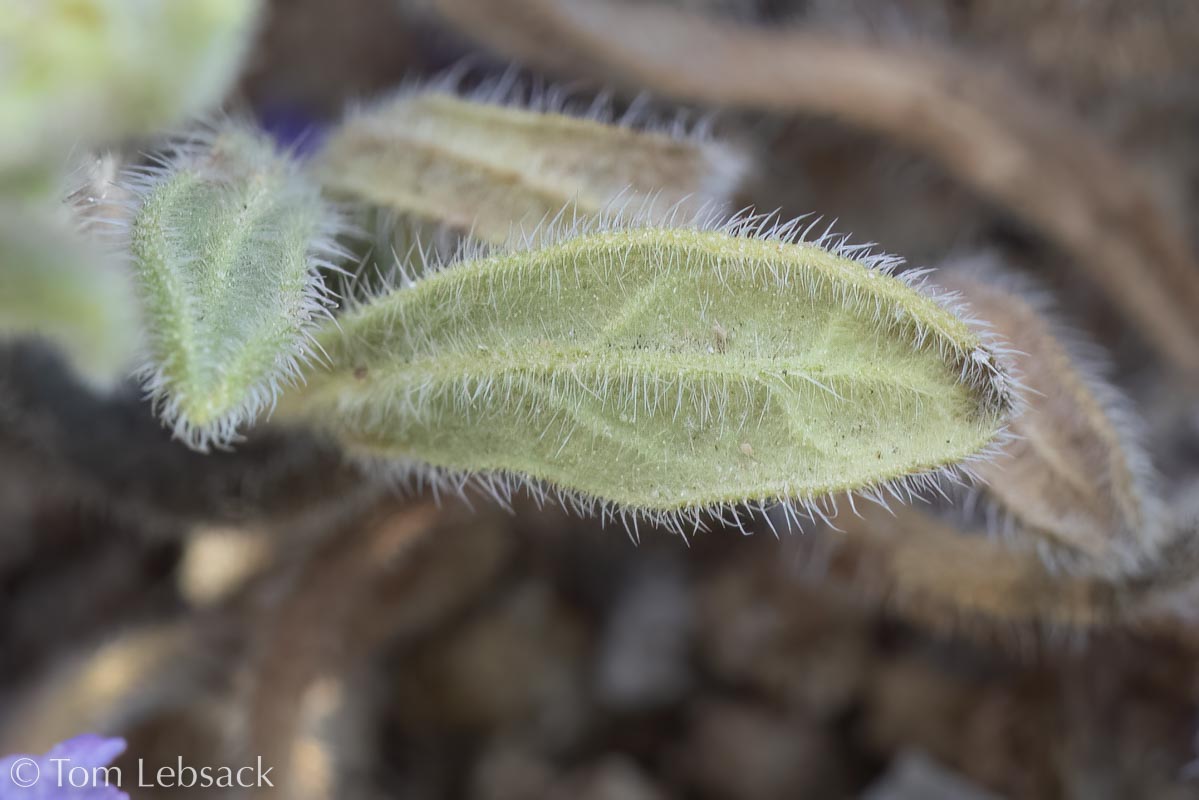Texas Wildbuds
Nama hispida
(Sand Bells)
| Scientific Name | Nama hispida (Nama hispidum) | USDA PLANTS Symbol | NAHI |
| Common Name | Sand Bells, Bristly Nama | ITIS Taxonomic Serial No. | 835388 |
| Family | Boraginaceae (Forget-me-not) | SEINet Reference |
Click Here |
| Description | Habitat: Sand and gravelly or rocky soils in various habitats; widespread in Texas. Plant: Erect or ascending, broadly branching annual 4 to 20 inches tall; hairy stems and leaves. Leaves: Variable leaves, alternate, linear-oblong to obovate or narrowly spatulate, 1/2 to 2-3/4 inches long and up to 1/3-inch wide; curled edges; surfaces covered with bristly hairs, glandular and non-glandular, moreso than N. havardii. Inflorescence: Solitary in leaf axils or small terminal clusters of pink to lavender to bright purple bell-shaped flowers with yellow throats, 1/2 inch across; linear-lanceolate calyx lobes divided nearly to the base. Bloom Period: March to July. References: "Manual of the Vascular Plants of Texas" by Correll and Johnston, “Wildflowers of the Texas Hill Country” by Marshall Enquist and SEINet. |
BONAP Distribution Map Map Color Key Map Color Key |
Texas Status: Native |
Banner photo of Castilleja indivisa and Lupinus ssp. taken along FM 1323 north of Johnson City, Blanco County
© Tom Lebsack 2025
Every attempt is made to provide accurate, up-to-date, and relevant information, but the completeness or accuracy of any information presented on this website cannot be guaranteed. I use authoritative references to insure high standards of accuracy and review and update the information frequently.








